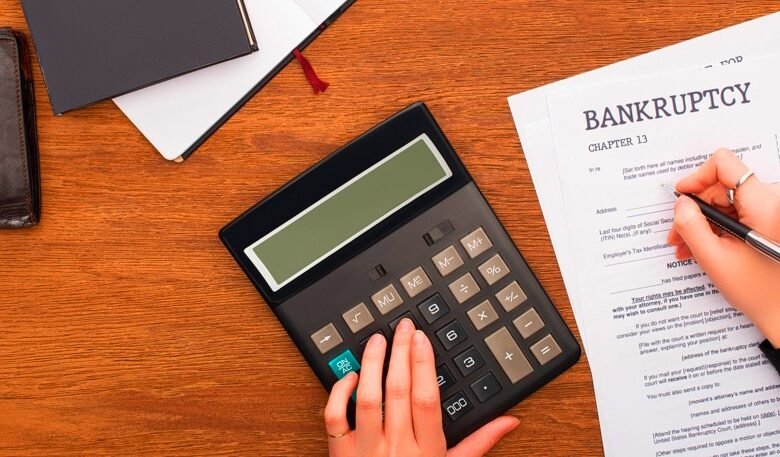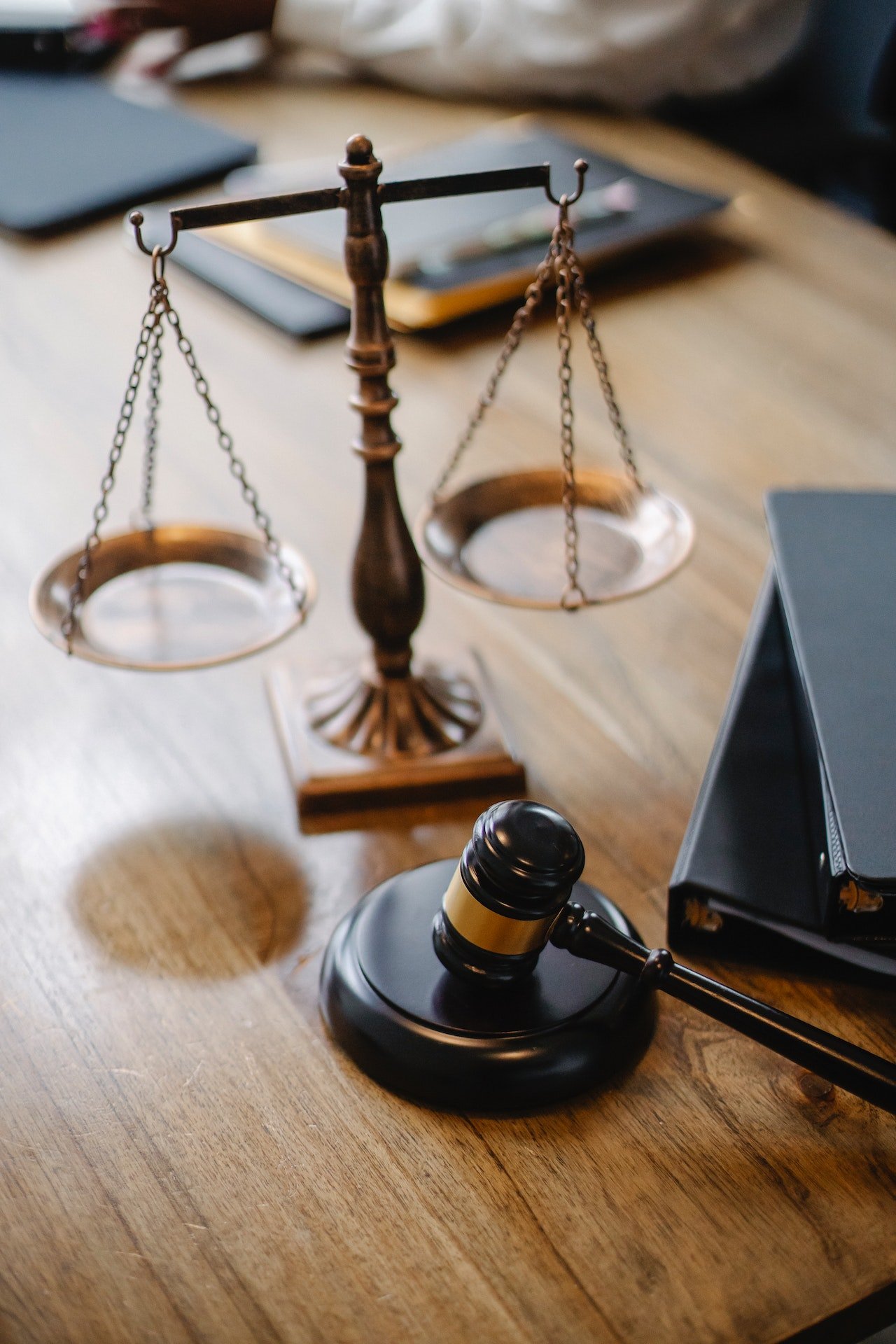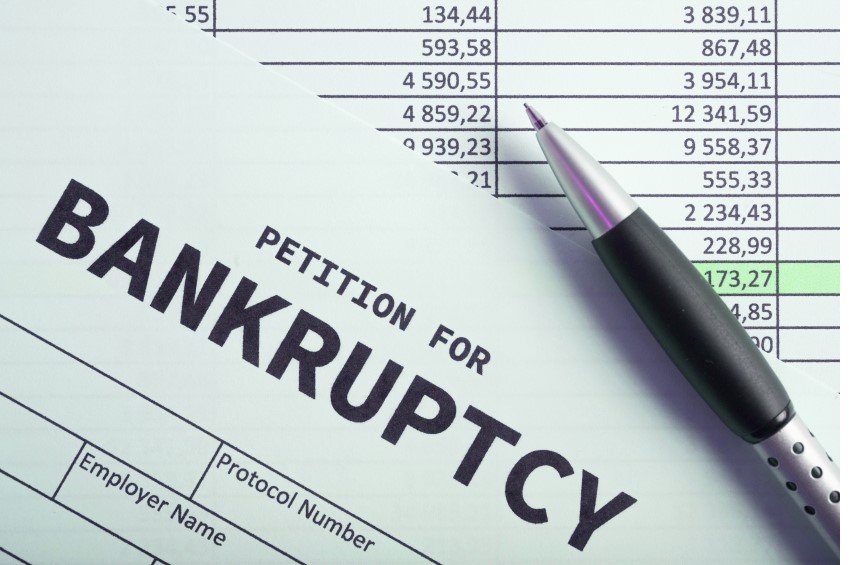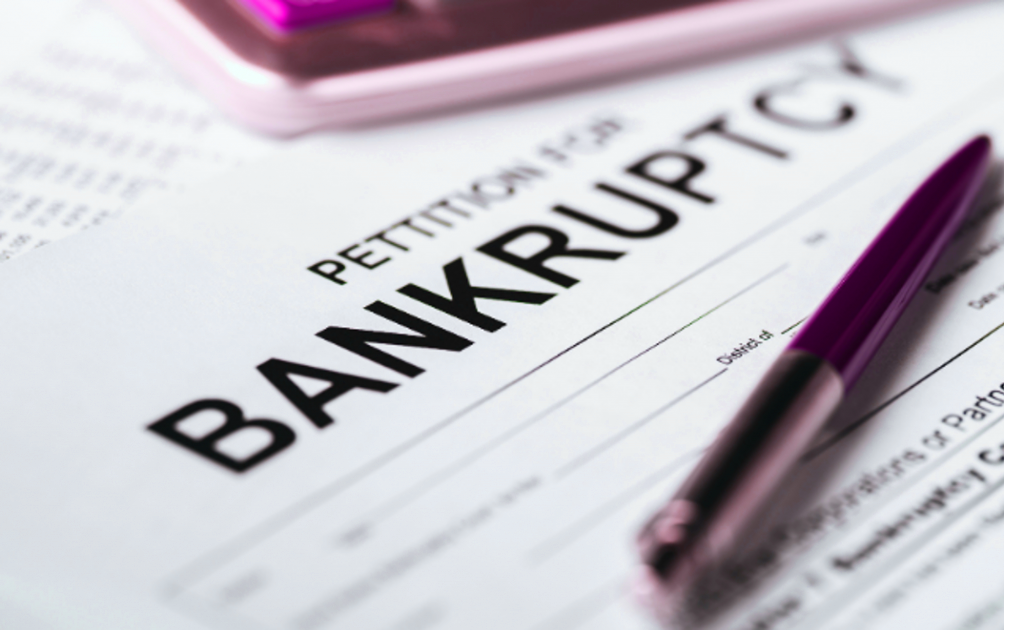Bankruptcy Law Essentials: A Layman’s Guide

Navigating the intricate landscape of bankruptcy law can be a daunting endeavor, fraught with complexities and uncertainties. For individuals and businesses facing financial distress, understanding the fundamental tenets of bankruptcy law is not merely advisable – it’s essential. In this comprehensive guide, aptly titled “Bankruptcy Law Essentials: A Layman’s Guide,” we delve into the depths of bankruptcy law to demystify its intricacies and provide actionable insights for those navigating the turbulent waters of financial insolvency.
From deciphering the various types of bankruptcy to exploring alternatives and understanding the implications for assets and credit, this guide aims to equip readers with the knowledge and understanding needed to navigate the challenges of bankruptcy with confidence and clarity. Whether you’re a debtor seeking relief or a creditor seeking recourse, this guide serves as a beacon of knowledge in the often murky waters of bankruptcy law. Join us as we embark on a journey through the essentials of bankruptcy law, empowering readers to make informed decisions and chart a course toward financial solvency.
Contents
- 1 Types of Bankruptcy
- 2 Filing for Bankruptcy
- 3 Automatic Stay
- 4 Bankruptcy Court Proceedings
- 5 Effects of Bankruptcy
- 6 Bankruptcy Alternatives
- 7 Rebuilding Credit After Bankruptcy
- 8 Common Misconceptions About Bankruptcy
- 9 Bankruptcy and Asset Protection
- 10 Bankruptcy Fraud
- 11 Bankruptcy and Foreclosure
- 12 Bankruptcy and Business
- 13 Bankruptcy and Taxes
- 14 Conclusion
- 15 FAQs(Bankruptcy Law Essentials: A Layman’s Guide)
Explanation of Bankruptcy Law
Bankruptcy law embodies a multifaceted set of statutes and regulations delineating the process by which debtors navigate the quagmire of indebtedness. It elucidates the rights and obligations of debtors and creditors alike, fostering an equitable resolution to financial quandaries.
Importance of Understanding Bankruptcy Law
For individuals and businesses teetering on the precipice of financial collapse, comprehending bankruptcy law is akin to wielding a double-edged sword. It not only bestows debtors with a second chance at financial redemption but also safeguards the interests of creditors, fostering an environment of transparency and fairness.
Types of Bankruptcy
Bankruptcy manifests in various forms, each tailored to address distinct financial exigencies. The primary classifications encompass Chapter 7, Chapter 11, and Chapter 13 bankruptcy, each bearing unique implications for debtors and creditors alike.
Chapter 7: Liquidation Bankruptcy
Revered as the quintessential form of bankruptcy, Chapter 7 entails the liquidation of assets to appease creditors’ voracious appetite for recompense. Individuals and businesses with scant financial resources often seek refuge in this form of bankruptcy, embracing the prospect of a fresh start unencumbered by the shackles of indebtedness.
Chapter 11: Reorganization Bankruptcy
Contrary to its liquidation-centric counterpart, Chapter 11 bankruptcy embodies a paradigm shift, advocating for the reorganization of debts to facilitate continued business operations. Esteemed as the bastion of corporate restructuring, Chapter 11 empowers businesses to chart a course toward financial solvency amidst turbulent economic tides.
Chapter 13: Individual Debt Adjustment Bankruptcy
Tailored to suit the needs of wage-earning individuals, Chapter 13 bankruptcy charts a divergent path, emphasizing debt reorganization over liquidation. Individuals blessed with a stable income stream embark on a journey of debt repayment, guided by a court-approved plan spanning three to five years.
Filing for Bankruptcy
Embarking on the labyrinthine journey of bankruptcy necessitates a nuanced understanding of the filing process, replete with procedural intricacies and legal requisites. From determining eligibility to navigating the veritable maze of paperwork, embarking on this odyssey mandates meticulous preparation and astute legal counsel.
Eligibility Criteria
Before treading the tumultuous waters of bankruptcy, debtors must traverse the proverbial gauntlet of eligibility criteria, delineating the parameters of financial destitution requisite for bankruptcy relief.
Process of Filing for Bankruptcy

The process of filing for bankruptcy is a multifaceted endeavor fraught with procedural intricacies and legal formalities. From completing requisite paperwork to attending the pivotal meeting of creditors, navigating this labyrinthine landscape demands meticulous attention to detail and astute legal guidance.
Role of Bankruptcy Attorney
In the crucible of bankruptcy proceedings, the role of a seasoned bankruptcy attorney assumes paramount significance, serving as a beacon of guidance amidst the tempestuous sea of legal complexities. Armed with a wealth of legal acumen and procedural expertise, bankruptcy attorneys navigate the treacherous waters of bankruptcy law, advocating for the rights and interests of their clients with unwavering fervor.
Automatic Stay
A quintessential hallmark of bankruptcy law, the automatic stay emerges as a formidable bulwark against the ceaseless onslaught of creditor harassment. This legal injunction halts all collection efforts by creditors, affording debtors a respite from the relentless barrage of financial distress.
Definition and Purpose
The automatic stay epitomizes the cornerstone of bankruptcy law, serving as a proverbial shield against the depredations of creditors. It affords debtors an invaluable respite, shielding them from the incessant clamor of creditor harassment while facilitating a semblance of financial reprieve.
Protections Offered by Automatic Stay
Embraced as the bastion of debtor protection, the automatic stay furnishes debtors with a panoply of safeguards, ranging from foreclosure prevention to cessation of wage garnishment. This legal injunction engenders a semblance of financial stability amidst the tumultuous throes of bankruptcy proceedings, allowing debtors to chart a course toward financial solvency.
Bankruptcy Court Proceedings
Navigating the turbulent waters of bankruptcy court proceedings necessitates a nuanced understanding of the procedural formalities and legal exigencies underpinning this judicial odyssey. From the pivotal meeting of creditors to the discharge of debts and reaffirmation agreements, embarking on this legal sojourn demands meticulous preparation and astute legal guidance.
Meeting of Creditors
The meeting of creditors stands as a pivotal juncture in the crucible of bankruptcy proceedings, offering debtors an opportunity to elucidate their financial circumstances before a tribunal of creditors. This seminal conclave fosters transparency and accountability, laying the groundwork for equitable resolution amidst the tempestuous sea of financial distress.
Read More: Navigating Bankruptcy: A Latest Guide in 2024
Discharge of Debts
Akin to a beacon of hope amidst the tumultuous sea of indebtedness, the discharge of debts embodies a seminal milestone in the annals of bankruptcy law. This judicial decree absolves debtors of their onerous financial burdens, ushering in a new dawn of financial redemption unencumbered by the shackles of indebtedness.
Reaffirmation Agreements
In the crucible of bankruptcy proceedings, reaffirmation agreements serve as a pivotal mechanism for debtors to retain certain assets while reaffirming their commitment to repay outstanding debts. This legal instrument empowers debtors to chart a course toward financial solvency while safeguarding the interests of creditors.
Effects of Bankruptcy
Bankruptcy exerts a profound and far-reaching impact on the financial landscape, heralding both blessings and tribulations for debtors and creditors alike. From its implications on credit score to the dichotomy of dischargeable and nondischargeable debts, navigating the tumultuous waters of bankruptcy mandates a nuanced understanding of its far-reaching ramifications.
Impact on Credit Score
The specter of bankruptcy casts a long and ominous shadow on the hallowed halls of creditworthiness, precipitating a precipitous decline in credit scores. This indelible stain on one’s financial record reverberates far and wide, impeding access to credit and engendering a miasma of financial uncertainty.
Exemptions from Bankruptcy
Despite the pervasive specter of liquidation looming large in the annals of bankruptcy law, debtors are not left entirely bereft of assets. Exemptions from bankruptcy afford debtors a lifeline, shielding essential assets from the depredations of liquidation while fostering a semblance of financial stability amidst the tumultuous sea of financial distress.
Dischargeable and Nondischargeable Debts
Navigating the labyrinthine landscape of bankruptcy mandates a nuanced understanding of the dichotomy between dischargeable and nondischargeable debts. While certain debts may be expunged from the annals of indebtedness, others linger on as indelible scars on one’s financial record, impeding the path toward financial redemption.
Bankruptcy Alternatives
Before embarking on the tumultuous odyssey of bankruptcy, debtors are well-advised to explore alternative avenues of debt relief, ranging from debt consolidation to debt settlement and credit counseling. These pragmatic alternatives offer debtors a lifeline amidst the tempestuous sea of financial distress, allowing them to chart a course toward financial solvency unencumbered by the shackles of bankruptcy.
Debt Consolidation
Embraced as a pragmatic alternative to bankruptcy, debt consolidation offers debtors a lifeline amidst the tumultuous sea of financial distress. By consolidating multiple debts into a single, manageable payment, debtors chart a course toward financial redemption unencumbered by the shackles of bankruptcy.
Debt Settlement
In the crucible of financial distress, debt settlement emerges as a beacon of hope amidst the tempestuous sea of indebtedness. By negotiating with creditors to settle outstanding debts for a fraction of their original value, debtors chart a course toward financial solvency unencumbered by the shackles of bankruptcy.
Credit Counseling
Armed with a wealth of financial acumen and practical guidance, credit counseling serves as a bastion of hope amidst the tumultuous sea of financial distress. By offering debtors pragmatic advice and actionable solutions, credit counseling empowers debtors to chart a course toward financial solvency unencumbered by the shackles of bankruptcy.
Rebuilding Credit After Bankruptcy
Embracing the arduous odyssey of rebuilding credit after bankruptcy demands fortitude and perseverance, as debtors embark on a journey fraught with challenges and uncertainties. By adhering to a disciplined regimen of financial stewardship and prudent credit management, debtors chart a course toward credit redemption unencumbered by the specter of bankruptcy.
Steps to Rebuild Credit
Embarking on the tumultuous odyssey of credit redemption demands a nuanced understanding of the steps requisite for financial redemption. From obtaining secured credit cards to paying bills on time and monitoring credit reports for errors, debtors navigate a labyrinthine landscape replete with challenges and uncertainties.
Importance of Financial Planning
In the crucible of credit redemption, the importance of financial planning assumes paramount significance, serving as a beacon of guidance amidst the tempestuous sea of financial uncertainty. By crafting a comprehensive financial plan and adhering to its precepts with unwavering fervor, debtors chart a course toward financial redemption unencumbered by the specter of bankruptcy.
Common Misconceptions About Bankruptcy
The annals of bankruptcy law are replete with a panoply of misconceptions and fallacies, perpetuating a miasma of confusion and uncertainty amidst the layman. From the stigma associated with bankruptcy to the misconceptions surrounding its long-term ramifications, navigating this treacherous terrain demands a nuanced understanding of its nuances and intricacies.
Bankruptcy Stigma
The pervasive stigma associated with bankruptcy casts a long and ominous shadow on the hallowed halls of financial redemption, perpetuating a miasma of confusion and uncertainty amidst the layman. From its implications on creditworthiness to its long-term ramifications, navigating this treacherous terrain demands a nuanced understanding of its far-reaching implications.
Long-Term Consequences
Contrary to popular belief, bankruptcy does not constitute a financial death sentence, but rather a lifeline amidst the tempestuous sea of financial distress. By charting a course toward financial redemption unencumbered by the specter of bankruptcy, debtors can embrace a new dawn of financial solvency and embark on a journey of fiscal redemption unencumbered by the shackles of financial distress.
Bankruptcy and Asset Protection
In the crucible of bankruptcy proceedings, the protection of assets assumes paramount significance, serving as a beacon of hope amidst the tempestuous sea of financial distress. By leveraging a panoply of asset protection mechanisms, debtors chart a course toward financial solvency unencumbered by the specter of liquidation.
Protection of Assets in Bankruptcy
Bankruptcy offers debtors a lifeline amidst the tumultuous sea of financial distress, affording them a panoply of safeguards to shield essential assets from the depredations of liquidation. By leveraging exemptions and asset protection mechanisms, debtors navigate a labyrinthine landscape replete with challenges and uncertainties.
Asset Exemptions in Bankruptcy
Despite the pervasive specter of liquidation looming large in the annals of bankruptcy law, debtors are not left entirely bereft of assets. Asset exemptions afford debtors a lifeline amidst the tempestuous sea of financial distress, shielding essential assets from the depredations of liquidation while fostering a semblance of financial stability.
Bankruptcy Fraud

In the crucible of bankruptcy proceedings, fraud emerges as a formidable foe, perpetuating a miasma of confusion and uncertainty amidst the layman. From concealing assets to providing false information, bankruptcy fraud manifests in myriad forms, precipitating dire consequences for debtors ensnared in its treacherous web.
Definition and Examples
Bankruptcy fraud encompasses a panoply of nefarious activities, ranging from concealing assets to providing false information during bankruptcy proceedings. From its implications on legal culpability to its far-reaching ramifications, navigating this treacherous terrain demands a nuanced understanding of its nuances and intricacies.
Consequences of Bankruptcy Fraud
The consequences of bankruptcy fraud are dire and far-reaching, precipitating a maelstrom of legal ramifications for debtors ensnared in its treacherous web. From criminal charges to civil penalties, bankruptcy fraud takes a steep toll on debtors who stray from the path of financial rectitude.
Bankruptcy and Foreclosure
In the crucible of financial distress, foreclosure looms large as a specter of impending doom, perpetuating a miasma of confusion and uncertainty amidst the layman. From its implications on homeownership to its ramifications for creditworthiness, navigating this treacherous terrain demands a nuanced understanding of its nuances and intricacies.
Relationship Between Bankruptcy and Foreclosure
Bankruptcy offers homeowners a lifeline amidst the tumultuous sea of foreclosure, allowing them to stave off impending foreclosure proceedings and chart a course toward financial solvency unencumbered by the specter of foreclosure.
Options to Prevent Foreclosure Through Bankruptcy
Contrary to popular belief, bankruptcy does not constitute a financial death sentence for homeowners facing foreclosure, but rather a lifeline amidst the tumultuous sea of financial distress. By filing for bankruptcy, homeowners can avail themselves of a panoply of safeguards to stave off foreclosure proceedings and chart a course toward financial solvency unencumbered by the specter of foreclosure.
Bankruptcy and Business
In the crucible of financial distress, businesses are not immune to the vagaries of bankruptcy, perpetuating a miasma of confusion and uncertainty amidst the layman. From its implications on corporate restructuring to its ramifications for business operations, navigating this treacherous terrain demands a nuanced understanding of its nuances and intricacies.
Bankruptcy Options for Businesses
Bankruptcy offers businesses a lifeline amidst the tumultuous sea of financial distress, allowing them to restructure their debts and chart a course toward financial solvency unencumbered by the specter of bankruptcy. From Chapter 11 reorganization to Chapter 7 liquidation, businesses navigate a labyrinthine landscape replete with challenges and uncertainties.
Effect of Bankruptcy on Business Operations
Contrary to popular belief, bankruptcy does not spell the demise of businesses ensnared in its treacherous web, but rather a lifeline amidst the tempestuous sea of financial distress. By leveraging a panoply of bankruptcy options, businesses can chart a course toward financial solvency unencumbered by the specter of bankruptcy, safeguarding the interests of stakeholders and employees alike.
Bankruptcy and Taxes
In the crucible of financial distress, taxes emerge as a formidable foe, perpetuating a miasma of confusion and uncertainty amidst the layman. From its implications on tax debts to its ramifications for tax consequences, navigating this treacherous terrain demands a nuanced understanding of its nuances and intricacies.
Dischargeability of Tax Debts in Bankruptcy
Contrary to popular belief, not all tax debts are dischargeable in bankruptcy, but rather subject to a stringent set of criteria delineating their eligibility for discharge. By navigating this treacherous terrain with caution and prudence, debtors can chart a course toward financial solvency unencumbered by the specter of tax debts.
Tax Consequences of Bankruptcy
The tax consequences of bankruptcy are far-reaching and nuanced, precipitating a maelstrom of confusion and uncertainty amidst the layman. From its implications on tax liabilities to its ramifications for tax filings, navigating this treacherous terrain demands a nuanced understanding of its nuances and intricacies.
Read More: Chapter 7 Bankruptcy and Debt Relief: What You Can Expect
Conclusion
In conclusion, bankruptcy law stands as a formidable bulwark against the ceaseless onslaught of financial distress, offering debtors a lifeline amidst the tempestuous sea of financial turmoil. By comprehending the nuances of bankruptcy law, debtors can chart a course toward financial solvency unencumbered by the specter of indebtedness, ushering in a new dawn of financial redemption and fiscal rectitude.
FAQs(Bankruptcy Law Essentials: A Layman’s Guide)
What is the difference between Chapter 7 and Chapter 13 bankruptcy?
Chapter 7 involves liquidation of assets, while Chapter 13 entails debt reorganization.
Can I keep my house and car if I file for bankruptcy?
It depends on various factors, including state exemptions and the type of bankruptcy filed.
How long does bankruptcy stay on my credit report?
Bankruptcy typically remains on a credit report for seven to ten years, depending on the type filed.
What happens to my retirement accounts in bankruptcy?
Retirement accounts are often exempt from bankruptcy proceedings, depending on state laws.
Is it possible to file for bankruptcy without an attorney?
While it’s possible, navigating the complexities of bankruptcy law without legal counsel can be challenging and risky.





